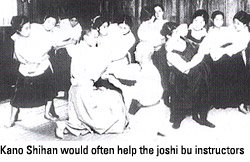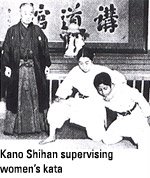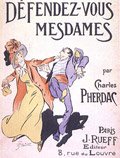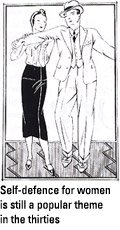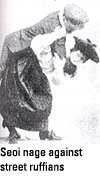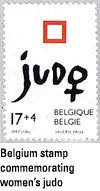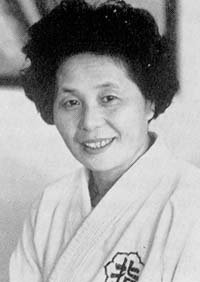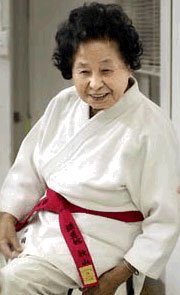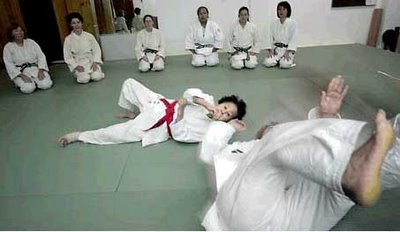غده پروستات غده ای است که تنها در مردان يافت می شود. اين غده در زير مثانه قرار دارد و مايعی به داخل منی ترشح می کند.
سرطان پروستات نوعی بيماری است که در آن سلولهای بدخيم از بافتهای پروستات نشات می گيرد و به طور نامنظم و فزايندهای تکثير و منجر به افزايش حجم در هر يک از اجزای سلولی غده پروستات میشود.
سرطان پروستات دومين سرطان شايع بعد از سرطان ريه در ميان مردان است. اطلاعات آماری و علائم بالينی ميزان مرگ و مير ناشی از سرطان پروستات مبين سه طيف گسترده روند رشد اين بيماری است. سرطان پروستات میتواند دارای رشد آهسته بوده و زمانی طولانی تا بروز علائم بالينی آن داشته باشد. در مواردی ديگر تومور به سرعت رشد کرده و تهاجم تومور به بافتهای ديگر امکانپذير می شود. در چنين مواردی مدت فاصله زمانی بين شروع بيماری و گسترش دامنه آن بسيار کوتاه است. مابين اين دو طيف رشد، تومورهايی وجود دارند که سرعت روند رشد آنها در حد متوسطی است.
سرطان پروستات با نشانههای مرتبط با دفع ادرار و يا درد شکم تظاهر میکند. اين نشانهها با علائم بيماريهای رايجی مانند عفونت و هيتروفی (بزرگی) خوش خيم پروستات (Benign Prostatic Hyperplasia) مشترک است.
علائم هشدار دهنده سرطان پروستات عبارتند از:
ادرار کردن پی در پی يا سخت
جاری شدن ضعيف ادرار
عدم توانايی در ادرار
بی اختياری ادراری
جريان منقطع و ضعيف ادرار
وجود خون در ادرار
خروج منی همراه با درد
درد مداوم قسمت پائين کمر
سوزش
ناتوانی جنسی
سببشناسی: سرطان زايی پروستات
علت ابتلا به سرطان پروستات هنوز ناشناخته است اما تحقيقات آماری و بالينی، روند بدخيمی بيماری سرطان پروستات را به اين عوامل ارتباط می دهد:
سن ـ سرطان پروستات اغلب در افراد سالمند ديده میشود و افراد زير ۵۰ سال به ندرت به آن مبتلا می شوند. مردان بالای ۶۰ سال بيشتر در معرض خطر ابتلاء به سرطان پروستات هستند و بايد بيشتر متوجه علائم هشدار دهنده اين بيماری باشند.
عوامل ژنتيکی - سابقه ارثی سرطان پروستات عامل مهمی در ابتلا به اين سرطان است. وجود سابقه سرطان پروستات بين اعضای نزديک خانواده از جمله پدر و برادر احتمال ابتلا به اين سرطان را افزايش می دهد.
عوامل هورمونی ـ هورمونهای استروئيدی (تستوسترون و آندروژنها) برای رشد و حفظ و عمل طبيعی آن در مردان بالغ نقش مهمی را ايفا می کند. افزايش ميزان ترشح هورمون تستوسترون در خون اغلب موجب تسريع روند بدخيمی سرطان پروستات می شود.
تغذيه - رژيم غذايی دارای اثرات بالقوه ای در پيشگيری و يا پيشتازی ايجاد سرطان پروستات به شمار می رود. مطالعات و تحقيقات علمی ثابت کرده اند که سبزيجات حاوی مقادير قابل توجهی ويتامين C و E، به خصوص گوجه فرنگی، عاملی محافظتی در مقابل سرطان پروستات تلقی می شوند در حالی که استفاده از مقادير زياد چربی حيوانی عامل مستعد کننده و پيشتاز در ايجاد سرطان پروستات شناخته شده است.
مواد شيميايی - تماس با مواد شيميايی سرطانزا در محيط مانند کادميم، که در تهيه برخی آلياژها و باتری کاربرد دارد، عامل مستعد کننده و پيشتاز در ايجاد سرطان پروستات است.
بيماری های مقاربتی - وجود بيماريهای مقاربتی احتمال ابتلاء به سرطان پروستات را افزايش میدهد.
الگوهای غربالگر سرطان پروستات
معاينه غده پروستات از طريق معاينه مقعد (Digital rectal examination) از الگوهای غربالگر سرطان پروستات است. در اين روش پزشک از داخل مقعد بيمار، غده پروستات را معاينه می کند. وجود سطح خشن و نامنظم بافت از علائم هشدار دهنده سرطان پروستات محسوب می شود.
تومورهای سرطانی آنتی ژنهای مشخصی را توليد می کنند که ممکن است از طريق آزمايش خون کشف شوند. آنتی ژنی که به طور کامل توسط غده پروستات توليد می شود، آنتی ژن اختصاصی پروستات (Prostate Specific Antigen ,PSA) است. تشخيص سريع سرطان پروستات با اندازه گيری آنتی ژن اختصاصی پروستات از آزمايش های غربالگر اين بيماری است. در بيمارانی که مبتلا به سرطان پروستات هستند، مقدار اين آنتی ژن در سطح بالاتری است.
البته تنها سطح PSA در آزمايش خون فرد نمايانگر ابتلا به سرطان پروستات نيست. در برخی از موارد عفونت و يا ”بزرگی خوش خيم“ حجم غده پروستات می تواند سبب افزايش ميزان PSA در خون شود. از اين رو، ترکيب معاينه مقعد توأم با آزمايش تعيين سطح PSA از طريق خون روش دقيقتری برای تشخيص سرطان پروستات است و برای اطمينان بيشتر، در مراحل بعدی آزمايشات ديگری مانند تصويرنگاری باز آوای مغناطيسی (MRI)، سونوگرافی (Ultrasound)، توموگرافی کامپيوتری (CT SCAN) و نمونه برداری از غده (Biopsy) نيز انجام میگيرد.
تشخيص به موقع بيماری، دست کم ۵ سال بيشتر به زندگی مبتلايان به سرطان پروستات اضافه میکند. توصيه میشود مردان در سنين بالای ۴۰ سال ساليانه مورد معاينه غده پروستات ازطريق معاينه مقعد قرار گيرند و در سنين بالای ۵۰ سال، هر سال آزمايش آنتیژن مخصوص پروستات را انجام دهند.
درمان سرطان پروستات
با در نظر گرفتن شرايط بيمار ممکن است يک يا ترکيبی از اين الگوها تجويز شود:
۱-تحت نظر گرفتن بيماری: در اين روش بيمار به طور دقيق تحت نظر پزشک قرار می گيرد، بدون اينکه الگوی درمانی بر روی او اعمال شود. اين روش برای بيمارانی تجويز می شود که جراحی برايشان مفيد نيست و يا رشد غده سرطانی پروستات آنها بسيار کند و آهسته است و در درازمدت تأثير سوء بر سلامتی او نخواهد گذاشت.
راديوتراپی از روش های درمانی انواع سرطان از جمله سرطان پروستات است۲-جراحی: برداشتن کامل غده پروستات (پروستکتومی Prostatectomy).
۳-کرايوتراپی (Cryotherapy) : استفاده درمانی از سرمای شديد. در اين روش سوند (probe) سونوگرافی به داخل مقعد انداخته می شود تا پزشک تصوير محل مورد نظر را بر روی صفحه ببيند. در اين روش پزشک با انداختن سوند درون غده پروستات از طريق شکاف کوچکی بين مقعد و کيسه حاوی بيضه ها نيتروژن مايع را به غده پروستات هدايت می کند. نيتروژن مايع در داخل بافت منجر به انجماد بافت و انهدام سلولهای سرطانی بافت غده پروستات می شود. کرايوتراپی روشی موثر برای درمان مقاطع کوچک ابتلا به سرطان است. احتمال آسيب ديدگی مثانه و التهاب دستگاه تناسلی از عوارض جانبی اين روش است.
۴-شيمی درمانی: استفاده از داروهای شيميايی منجر به انهدام سلولهای سرطانی می شود. عوارض جانبی شيمی درمانی عبارتند از: ريزش موی سر و ابرو، کاهش گلبولهای سفيد خون، ضعف سيستم ايمنی و دفاعی بدن، عفونت، احساس درد، خشکی دهان و پوکی استخوان.
۵-راديوتراپی: از آنجا که تومور ممکن است بافتهای اطراف غده پروستات را در بر گرفته باشد انجام جراحی و برداشتن غده پروستات کافی نيست و هر تظاهری از وجود PSA در آزمايش حاکی از گستردگی تومور است. در چنين وضعيتی الگوهای درمانی وسيع تری مانند راديوتراپی پی گيری می شود. هدف از راديوتراپی کنترل رشد سلولهای سرطانی است. تابش اشعه به محل تومور ممکن است به صورت خارجی يا داخلی باشد.
راديوتراپی خارجی: در اين روش بيمار در معرض تشعشع قرار می گيرد. اشعه از چند زاويه مختلف از خارج از بدن به تومور هدايت می شود. اين روش کاملا بدون درد است و به مدت ۷ تا ۸ هفته ادامه دارد. ولی بيمار از عوارض جانبی مانند تحريک پذيری مقعد، اسهال و خستگی مفرط ناشی از تابش پرتو گزارش می دهد. اثرات اشعه ممکن است واکنشهای پوستی به صورت التهاب، خارش، سوزش، ترشح يا پوسته پوسته شدن پوست را به دنبال داشته باشد. تهوع، استفراغ، بی اشتهايی و آسيبهای عروقی و تنفسی می تواند از ديگر عوارض جانبی راديو تراپی باشد. همچنين راديوتراپی ممکن است باعث سرکوب سيستم خونساز بدن و کاهش گلبولهای سفيد و ضعف سيستم ايمنی بدن و نهايتا بروز عفونت شود.
راديو تراپی داخلی يا براکی تراپی (Brachy therapy): براکی تراپی برای رساندن مستقيم مقدار زيادی اشعه به ضايعه بدخيم است. در اين روش، در اتاق عمل با استفاده از سرنج های نازک مواد يونيزه در بدن بيمار کاشته می شود.
6-هورمون درمانی : از آنجا که هورمون تستوسترون به رشد سرطان غده پروستات کمک می کند، هدف از هورمون درمانی کاهش هورمون جنسی در بدن است. اين روش با به کارگيری داروهای ضد تستوسترون انجام می گيرد و شامل تجويز هورمون استروژن به عنوان قرص است که تاثير ضد تستوسترون دارد. عوارض جانبی استفاده از قرصهای حاوی استروژن شامل درد در پستان و رشد پستان است که با قطع مصرف قرص ها از بين می رود.
جلوگيری از مرگ و مير ناشی از سرطان پروستات با تشخيص زودرس امکانپذير است. اکنون با اطلاعات و روشهای جديد الگوهای درمانی، برای درصد بالايی از بيماران مبتلا به سرطان پروستات، امکان بهبودی کامل فراهم شده است.
سرطان پروستات نوعی بيماری است که در آن سلولهای بدخيم از بافتهای پروستات نشات می گيرد و به طور نامنظم و فزايندهای تکثير و منجر به افزايش حجم در هر يک از اجزای سلولی غده پروستات میشود.
سرطان پروستات دومين سرطان شايع بعد از سرطان ريه در ميان مردان است. اطلاعات آماری و علائم بالينی ميزان مرگ و مير ناشی از سرطان پروستات مبين سه طيف گسترده روند رشد اين بيماری است. سرطان پروستات میتواند دارای رشد آهسته بوده و زمانی طولانی تا بروز علائم بالينی آن داشته باشد. در مواردی ديگر تومور به سرعت رشد کرده و تهاجم تومور به بافتهای ديگر امکانپذير می شود. در چنين مواردی مدت فاصله زمانی بين شروع بيماری و گسترش دامنه آن بسيار کوتاه است. مابين اين دو طيف رشد، تومورهايی وجود دارند که سرعت روند رشد آنها در حد متوسطی است.
سرطان پروستات با نشانههای مرتبط با دفع ادرار و يا درد شکم تظاهر میکند. اين نشانهها با علائم بيماريهای رايجی مانند عفونت و هيتروفی (بزرگی) خوش خيم پروستات (Benign Prostatic Hyperplasia) مشترک است.
علائم هشدار دهنده سرطان پروستات عبارتند از:
ادرار کردن پی در پی يا سخت
جاری شدن ضعيف ادرار
عدم توانايی در ادرار
بی اختياری ادراری
جريان منقطع و ضعيف ادرار
وجود خون در ادرار
خروج منی همراه با درد
درد مداوم قسمت پائين کمر
سوزش
ناتوانی جنسی
سببشناسی: سرطان زايی پروستات
علت ابتلا به سرطان پروستات هنوز ناشناخته است اما تحقيقات آماری و بالينی، روند بدخيمی بيماری سرطان پروستات را به اين عوامل ارتباط می دهد:
سن ـ سرطان پروستات اغلب در افراد سالمند ديده میشود و افراد زير ۵۰ سال به ندرت به آن مبتلا می شوند. مردان بالای ۶۰ سال بيشتر در معرض خطر ابتلاء به سرطان پروستات هستند و بايد بيشتر متوجه علائم هشدار دهنده اين بيماری باشند.
عوامل ژنتيکی - سابقه ارثی سرطان پروستات عامل مهمی در ابتلا به اين سرطان است. وجود سابقه سرطان پروستات بين اعضای نزديک خانواده از جمله پدر و برادر احتمال ابتلا به اين سرطان را افزايش می دهد.
عوامل هورمونی ـ هورمونهای استروئيدی (تستوسترون و آندروژنها) برای رشد و حفظ و عمل طبيعی آن در مردان بالغ نقش مهمی را ايفا می کند. افزايش ميزان ترشح هورمون تستوسترون در خون اغلب موجب تسريع روند بدخيمی سرطان پروستات می شود.
تغذيه - رژيم غذايی دارای اثرات بالقوه ای در پيشگيری و يا پيشتازی ايجاد سرطان پروستات به شمار می رود. مطالعات و تحقيقات علمی ثابت کرده اند که سبزيجات حاوی مقادير قابل توجهی ويتامين C و E، به خصوص گوجه فرنگی، عاملی محافظتی در مقابل سرطان پروستات تلقی می شوند در حالی که استفاده از مقادير زياد چربی حيوانی عامل مستعد کننده و پيشتاز در ايجاد سرطان پروستات شناخته شده است.
مواد شيميايی - تماس با مواد شيميايی سرطانزا در محيط مانند کادميم، که در تهيه برخی آلياژها و باتری کاربرد دارد، عامل مستعد کننده و پيشتاز در ايجاد سرطان پروستات است.
بيماری های مقاربتی - وجود بيماريهای مقاربتی احتمال ابتلاء به سرطان پروستات را افزايش میدهد.
الگوهای غربالگر سرطان پروستات
معاينه غده پروستات از طريق معاينه مقعد (Digital rectal examination) از الگوهای غربالگر سرطان پروستات است. در اين روش پزشک از داخل مقعد بيمار، غده پروستات را معاينه می کند. وجود سطح خشن و نامنظم بافت از علائم هشدار دهنده سرطان پروستات محسوب می شود.
تومورهای سرطانی آنتی ژنهای مشخصی را توليد می کنند که ممکن است از طريق آزمايش خون کشف شوند. آنتی ژنی که به طور کامل توسط غده پروستات توليد می شود، آنتی ژن اختصاصی پروستات (Prostate Specific Antigen ,PSA) است. تشخيص سريع سرطان پروستات با اندازه گيری آنتی ژن اختصاصی پروستات از آزمايش های غربالگر اين بيماری است. در بيمارانی که مبتلا به سرطان پروستات هستند، مقدار اين آنتی ژن در سطح بالاتری است.
البته تنها سطح PSA در آزمايش خون فرد نمايانگر ابتلا به سرطان پروستات نيست. در برخی از موارد عفونت و يا ”بزرگی خوش خيم“ حجم غده پروستات می تواند سبب افزايش ميزان PSA در خون شود. از اين رو، ترکيب معاينه مقعد توأم با آزمايش تعيين سطح PSA از طريق خون روش دقيقتری برای تشخيص سرطان پروستات است و برای اطمينان بيشتر، در مراحل بعدی آزمايشات ديگری مانند تصويرنگاری باز آوای مغناطيسی (MRI)، سونوگرافی (Ultrasound)، توموگرافی کامپيوتری (CT SCAN) و نمونه برداری از غده (Biopsy) نيز انجام میگيرد.
تشخيص به موقع بيماری، دست کم ۵ سال بيشتر به زندگی مبتلايان به سرطان پروستات اضافه میکند. توصيه میشود مردان در سنين بالای ۴۰ سال ساليانه مورد معاينه غده پروستات ازطريق معاينه مقعد قرار گيرند و در سنين بالای ۵۰ سال، هر سال آزمايش آنتیژن مخصوص پروستات را انجام دهند.
درمان سرطان پروستات
با در نظر گرفتن شرايط بيمار ممکن است يک يا ترکيبی از اين الگوها تجويز شود:
۱-تحت نظر گرفتن بيماری: در اين روش بيمار به طور دقيق تحت نظر پزشک قرار می گيرد، بدون اينکه الگوی درمانی بر روی او اعمال شود. اين روش برای بيمارانی تجويز می شود که جراحی برايشان مفيد نيست و يا رشد غده سرطانی پروستات آنها بسيار کند و آهسته است و در درازمدت تأثير سوء بر سلامتی او نخواهد گذاشت.
راديوتراپی از روش های درمانی انواع سرطان از جمله سرطان پروستات است۲-جراحی: برداشتن کامل غده پروستات (پروستکتومی Prostatectomy).
۳-کرايوتراپی (Cryotherapy) : استفاده درمانی از سرمای شديد. در اين روش سوند (probe) سونوگرافی به داخل مقعد انداخته می شود تا پزشک تصوير محل مورد نظر را بر روی صفحه ببيند. در اين روش پزشک با انداختن سوند درون غده پروستات از طريق شکاف کوچکی بين مقعد و کيسه حاوی بيضه ها نيتروژن مايع را به غده پروستات هدايت می کند. نيتروژن مايع در داخل بافت منجر به انجماد بافت و انهدام سلولهای سرطانی بافت غده پروستات می شود. کرايوتراپی روشی موثر برای درمان مقاطع کوچک ابتلا به سرطان است. احتمال آسيب ديدگی مثانه و التهاب دستگاه تناسلی از عوارض جانبی اين روش است.
۴-شيمی درمانی: استفاده از داروهای شيميايی منجر به انهدام سلولهای سرطانی می شود. عوارض جانبی شيمی درمانی عبارتند از: ريزش موی سر و ابرو، کاهش گلبولهای سفيد خون، ضعف سيستم ايمنی و دفاعی بدن، عفونت، احساس درد، خشکی دهان و پوکی استخوان.
۵-راديوتراپی: از آنجا که تومور ممکن است بافتهای اطراف غده پروستات را در بر گرفته باشد انجام جراحی و برداشتن غده پروستات کافی نيست و هر تظاهری از وجود PSA در آزمايش حاکی از گستردگی تومور است. در چنين وضعيتی الگوهای درمانی وسيع تری مانند راديوتراپی پی گيری می شود. هدف از راديوتراپی کنترل رشد سلولهای سرطانی است. تابش اشعه به محل تومور ممکن است به صورت خارجی يا داخلی باشد.
راديوتراپی خارجی: در اين روش بيمار در معرض تشعشع قرار می گيرد. اشعه از چند زاويه مختلف از خارج از بدن به تومور هدايت می شود. اين روش کاملا بدون درد است و به مدت ۷ تا ۸ هفته ادامه دارد. ولی بيمار از عوارض جانبی مانند تحريک پذيری مقعد، اسهال و خستگی مفرط ناشی از تابش پرتو گزارش می دهد. اثرات اشعه ممکن است واکنشهای پوستی به صورت التهاب، خارش، سوزش، ترشح يا پوسته پوسته شدن پوست را به دنبال داشته باشد. تهوع، استفراغ، بی اشتهايی و آسيبهای عروقی و تنفسی می تواند از ديگر عوارض جانبی راديو تراپی باشد. همچنين راديوتراپی ممکن است باعث سرکوب سيستم خونساز بدن و کاهش گلبولهای سفيد و ضعف سيستم ايمنی بدن و نهايتا بروز عفونت شود.
راديو تراپی داخلی يا براکی تراپی (Brachy therapy): براکی تراپی برای رساندن مستقيم مقدار زيادی اشعه به ضايعه بدخيم است. در اين روش، در اتاق عمل با استفاده از سرنج های نازک مواد يونيزه در بدن بيمار کاشته می شود.
6-هورمون درمانی : از آنجا که هورمون تستوسترون به رشد سرطان غده پروستات کمک می کند، هدف از هورمون درمانی کاهش هورمون جنسی در بدن است. اين روش با به کارگيری داروهای ضد تستوسترون انجام می گيرد و شامل تجويز هورمون استروژن به عنوان قرص است که تاثير ضد تستوسترون دارد. عوارض جانبی استفاده از قرصهای حاوی استروژن شامل درد در پستان و رشد پستان است که با قطع مصرف قرص ها از بين می رود.
جلوگيری از مرگ و مير ناشی از سرطان پروستات با تشخيص زودرس امکانپذير است. اکنون با اطلاعات و روشهای جديد الگوهای درمانی، برای درصد بالايی از بيماران مبتلا به سرطان پروستات، امکان بهبودی کامل فراهم شده است.
